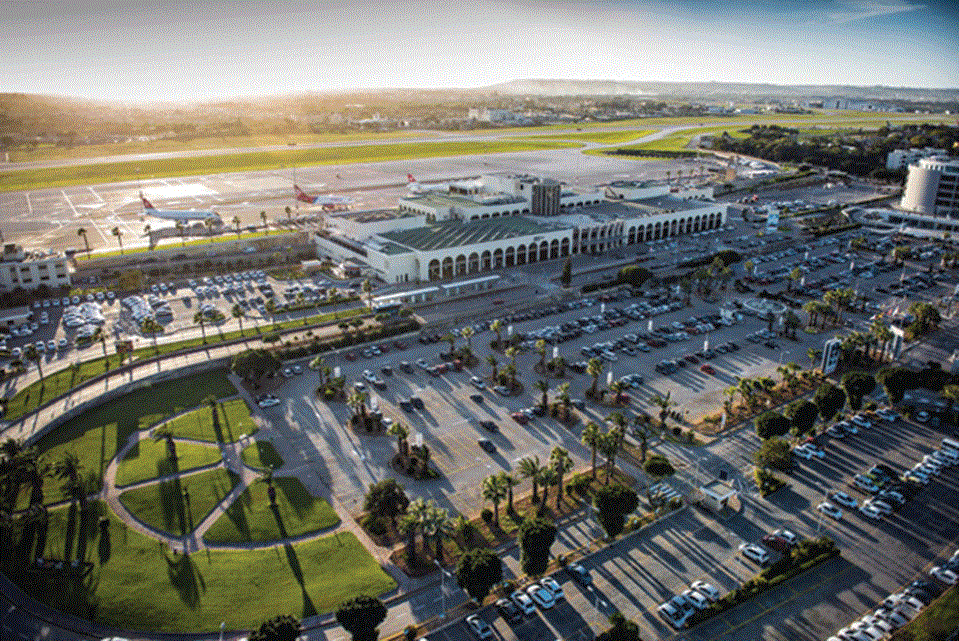- MIA passenger traffic up by almost 70% since 2005
- Passenger growth forecast for 2015 revised after first six months
- Minister for Tourism: 'A record year expected on all fronts'
Noel Grima
Malta International Airport is expecting to host at least 4.5 million passengers by the end of the year, an increase of more than 200,000 or 5% growth year-on-year over 2014. This is equivalent to over 1,100 Boeing 737 aircraft at full capacity.
Giving its updated mid-year forecast, MIA said last week it was experiencing record passenger numbers month after month and successfully increasing traffic in the non-peak months.
"Our revised forecast for this year takes into account several elements: the growth rate for the first six months, the positive start to summer and a cautiously optimistic view of the remaining quarters," said CEO Alan Borg.
"The really good news is that in just 10 years, traffic to Malta has gone up by almost 70%, with the increase being spread evenly throughout the year and not just in the peak months. We're confident we can keep increasing our traffic and help to sell Malta as a year-round destination," he added.
The Minister for Tourism Dr Edward Zammit Lewis welcomed the results and said the overall prospects for the tourism sector remained very positive, with a record year expected on all fronts.
The minister noted that efforts were being directed to further diversify Malta's source markets and extend the tourism season through improved accessibility and the expansion of the island's product and event offering to cover the full calendar year.
A comparison with the figures registered 10 years ago shows that traffic in Q1 (January, February and March) grew by 58% since 2005 and the combined growth for both Q1 and Q2 registered an increase of 69%.
The latest passenger traffic figures for June show an increase of 8.2% compared to last year. Meanwhile, traffic between January and June increased by 6.9% over 2014.
The increase in traffic was in part a result of seat capacity rising by 4.9% this June compared to the same month last year. Similarly, the average seat capacity from January to June was up 3.7% compared to the same period of 2014.
Besides a larger number of seats available, airlines flying to and from Malta also managed to fill their aircraft more consistently, with seat load factor hitting 81.3% in June compared to 78.8% last year.

For the period January to June, seat load factor hit an average of 77.9% compared to 75.6% registered in the first six months of last year.
Meanwhile, cargo and mail have increased by 4.5% in June compared with last year, but registered an overall drop of 2% for the period January to June.
General aviation saw a 54.1% increase, mostly due to flights to and from Libya.
While traffic grew by 8.1% in February, it grew by a much larger margin, 9.9% in May and by 8.2% in June.
Malta's top market remains the UK, with 580,107 passenger movements in the first six months of 2015, followed by Italy (396,427) and Germany (274,954).
The UK accounts now for 29% of all traffic, while Italy, with a 13.7% increase, accounts for 20%. Germany is third with a 14% share and a more modest 9.6% increase.
London Gatwick remains the most popular destination out of MIA, with almost 150,000 passenger movements and a 6.7% increase. Frankfurt is second and Rome Fiumicino third. There were slight decreases in movements to London Heathrow and Manchester while Catania's Fontanarossa saw a whopping 20.6% increase to 76,800 passenger movements. An even better result was that as regards Bergamo's Orio al Serio which saw no less than a 37.9% increase to 51,800 passenger movements.
Air Malta remains the largest carrier out of MIA but it carried 769,000 or 25,600 less passengers in the half year. Ryanair carried 541,000 or 56,000 more passengers than last year. Easyjet was third with 147,000 passengers while Lufthansa, fourth with 97,000 saw some decrease in the Munich route.
Wizz Air carried 60,800 passengers, a huge 224.9% increase because it added three routes and Turkish, which carried 47,000 passengers saw a 116.5% increase.
MIA's strategy in this regard is six-fold. It aims to
- Continue to focus on the more untapped markets around Scandinavia and Eastern Europe including Russia
- Recover traffic from the Spanish market
- Explore opportunities for connectivity to Portugal
- Target regional airports around continental Europe especially France and Germany
- Keep growing the Cruise & Fly operation, and
- Maintain a healthy business mix
As a sort of comparison, the UK market has grown by 24% from 2005 to 2015, the Italian one by 147%, the German market by 63%, the Eastern Europe market by 353% and the Scandinavian market by 35%.
For the first time, Scandinavian Airlines (two weekly flights to Stockholm) and Vueling (two weekly flights to Barcelona) will extend their operation into winter while Lufthansa (second weekly flight to Munich), Turkish Airlines (three additional flights - 10 flights a week to Istanbul), Ryanair (adding East Midlands, Kaunas and Rome Ciampino plus increasing the Madrid route to three flights a week) and Wizzair (extending the recently-introduced Warsaw route and adding a second weekly flight to Sofia) will be increasing their weekly flights.
In 2015, MIA has invested €2m in the expansion of the non-Schengen area (footprint increased by 54% and modification of the Arrivals area including five additional gates)
, €950,000 in runway, apron and taxiway improvements and another €970,000 in high voltage network re-organisation and back-up standby power generators.